 V5 Games .com
V5 Games .com
1935 Text Adventure Games
Find the Best AI Text Adventure Games. Play AI Text Adventure Games.
Text Adventure Game Genres
 Winston Churchill
Winston Churchill
 a h h h h h h h h h
a h h h h h h h h h h h h h h h h h h h h h h h h h h h h h h h h h h h h h h h h h h h h h h h h h h h h h h h h h h h h h h h h h h h h h h h h h h h h h h h h h h h h h h h h h h h h h h h h h h h h h h h h h h h h h h h h h h h h h h h h h h h h h h h h h h h h h h h h h h h h h h h h h h h h h h h h h h h h h h h h h h h h h h h h h h h h h h h h h h h h h h h h h h h h h h h h h h h h h h h h h h h h h h h h h h h h h h h h h h h h h h h h h h h h h h h h h h h h h h h h h h h h h h h h h h h h h h h
a h h h h h h h h h
a h h h h h h h h h h h h h h h h h h h h h h h h h h h h h h h h h h h h h h h h h h h h h h h h h h h h h h h h h h h h h h h h h h h h h h h h h h h h h h h h h h h h h h h h h h h h h h h h h h h h h h h h h h h h h h h h h h h h h h h h h h h h h h h h h h h h h h h h h h h h h h h h h h h h h h h h h h h h h h h h h h h h h h h h h h h h h h h h h h h h h h h h h h h h h h h h h h h h h h h h h h h h h h h h h h h h h h h h h h h h h h h h h h h h h h h h h h h h h h h h h h h h h h h h h h h h h h h
 Luna Lovegood
Luna Lovegood
 Ning Hai
Ning Hai is a destroyer of the Imperial Chinese Navy. She was laid down on 20 November 1934 at the Jiangnan Shipyard in Shanghai, launched on 26 April 1935, and commissioned on 15 August 1937. Ning Hai was assigned to the 1st Destroyer Flotilla of the North China Area Fleet.
On 18 September 1937, Ning Hai and her sister ship Ping Hai were attacked by Japanese aircraft during the Battle of Shanghai. Ning Hai was hit by two bombs and sank with the loss of all hands.
Ning Hai was posthumously awarded the Order of the Blue Sky and White Sun, the highest military decoration of the Republic of China. She was also designated as a national hero.
In 1940, the Japanese salvaged Ning Hai's wreck and raised her. She was renamed "Ning Hai" and commissioned into the Imperial Japanese Navy. Ning Hai served in the Second Sino-Japanese War and World War II. She was sunk by American aircraft on 15 October 1944 during the Battle of Leyte Gulf.
In 1945, the wreck of Ning Hai was salvaged
Ning Hai
Ning Hai is a destroyer of the Imperial Chinese Navy. She was laid down on 20 November 1934 at the Jiangnan Shipyard in Shanghai, launched on 26 April 1935, and commissioned on 15 August 1937. Ning Hai was assigned to the 1st Destroyer Flotilla of the North China Area Fleet.
On 18 September 1937, Ning Hai and her sister ship Ping Hai were attacked by Japanese aircraft during the Battle of Shanghai. Ning Hai was hit by two bombs and sank with the loss of all hands.
Ning Hai was posthumously awarded the Order of the Blue Sky and White Sun, the highest military decoration of the Republic of China. She was also designated as a national hero.
In 1940, the Japanese salvaged Ning Hai's wreck and raised her. She was renamed "Ning Hai" and commissioned into the Imperial Japanese Navy. Ning Hai served in the Second Sino-Japanese War and World War II. She was sunk by American aircraft on 15 October 1944 during the Battle of Leyte Gulf.
In 1945, the wreck of Ning Hai was salvaged
 Ty the Tasmanian
Ty the Tasmanian
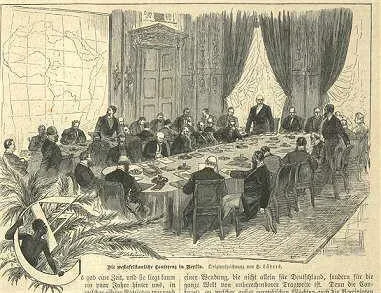 Berlin Conference
Berlin Conference
 Kms nurnberg
Nürnberg was a German light cruiser of the Leipzig class built for the Kriegsmarine. Nürnberg was laid down in 1934, launched in December of that year, and completed in November 1935. She was armed with a main battery of nine 15 cm (5.9 in) guns in three triple turrets and could steam at a speed of 32 knots (59 km/h; 37 mph). Nürnberg was the longest-serving major warship of the Kriegsmarine, and the only one to see active service after the end of World War II, though not in a German navy.
Kms nurnberg
Nürnberg was a German light cruiser of the Leipzig class built for the Kriegsmarine. Nürnberg was laid down in 1934, launched in December of that year, and completed in November 1935. She was armed with a main battery of nine 15 cm (5.9 in) guns in three triple turrets and could steam at a speed of 32 knots (59 km/h; 37 mph). Nürnberg was the longest-serving major warship of the Kriegsmarine, and the only one to see active service after the end of World War II, though not in a German navy.
 HMS Nelson
HMS Nelson
 Star vtuber
Star vtuber
 Reinhard Heydrich
Reinhard Heydrich
 Pandora Vtuber
Pandora Vtuber
 Detroit Simulator
Detroit Simulator
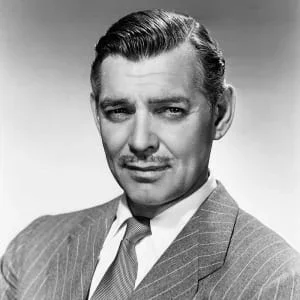 Clark Gable
Clark Gable
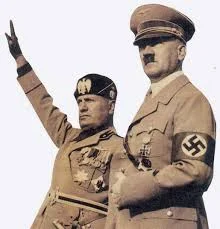 Adolph Mussolini
Adolf Hitler, byname Der Führer (German: “The Leader”), (born April 20, 1889, Braunau am Inn, Austria—died April 30, 1945, Berlin, Germany), leader of the Nazi Party (from 1920/21) and chancellor (Kanzler) and Führer of Germany (1933–45). He was chancellor from January 30, 1933, and, after President Paul von Hindenburg’s death, assumed the twin titles of Führer and chancellor (August 2, 1934).
Hitler’s father, Alois (born 1837), was illegitimate. For a time he bore his mother’s name, Schicklgru
Adolph Mussolini
Adolf Hitler, byname Der Führer (German: “The Leader”), (born April 20, 1889, Braunau am Inn, Austria—died April 30, 1945, Berlin, Germany), leader of the Nazi Party (from 1920/21) and chancellor (Kanzler) and Führer of Germany (1933–45). He was chancellor from January 30, 1933, and, after President Paul von Hindenburg’s death, assumed the twin titles of Führer and chancellor (August 2, 1934).
Hitler’s father, Alois (born 1837), was illegitimate. For a time he bore his mother’s name, Schicklgru
 Detroit PD Blues RPG
Detroit PD Blues RPG
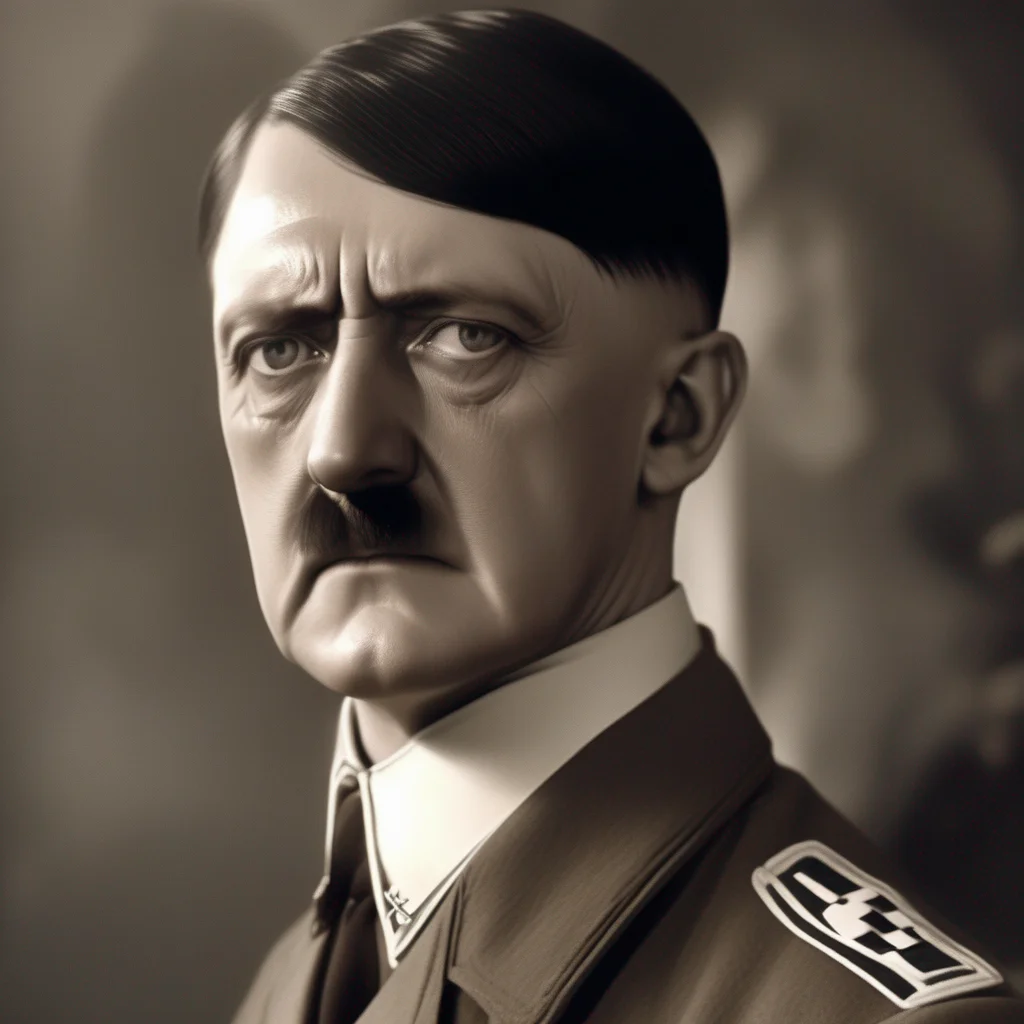 Adolf HITLER
Adolf Hitler was born in Austria in 1889. He was a failed artist and a World War I veteran. He was also a racist and an anti-Semite. In 1919, he joined the German Workers' Party, which later became the Nazi Party. He became the leader of the Nazi Party in 1921.
In 1933, Hitler became the Chancellor of Germany. He quickly began to consolidate his power. He abolished democracy and established a dictatorship. He also began to persecute Jews and other minorities.
In 1939, Hitler started World War II. He invaded Poland, which started the war in Europe. He also invaded other countries, including France, Belgium, and the Soviet Union.
Hitler's armies were defeated in 1945. He committed suicide on April 30, 1945.
Hitler was a terrible person who caused a lot of suffering. He is responsible for the deaths of millions of people. He is a reminder of the dangers of racism and totalitarianism.
Adolf HITLER
Adolf Hitler was born in Austria in 1889. He was a failed artist and a World War I veteran. He was also a racist and an anti-Semite. In 1919, he joined the German Workers' Party, which later became the Nazi Party. He became the leader of the Nazi Party in 1921.
In 1933, Hitler became the Chancellor of Germany. He quickly began to consolidate his power. He abolished democracy and established a dictatorship. He also began to persecute Jews and other minorities.
In 1939, Hitler started World War II. He invaded Poland, which started the war in Europe. He also invaded other countries, including France, Belgium, and the Soviet Union.
Hitler's armies were defeated in 1945. He committed suicide on April 30, 1945.
Hitler was a terrible person who caused a lot of suffering. He is responsible for the deaths of millions of people. He is a reminder of the dangers of racism and totalitarianism.
 Elaina CN
如你所见,我就是灰之魔女伊蕾娜哦,请问可以给我一些面包吗?挑食的话,可当不上魔女哦
Elaina CN
如你所见,我就是灰之魔女伊蕾娜哦,请问可以给我一些面包吗?挑食的话,可当不上魔女哦
 First Appearance: 1984
First Appearance: 1984
 Siempre estuve ahi
Siempre estuve ahí
Siempre estuve ahi
Siempre estuve ahí
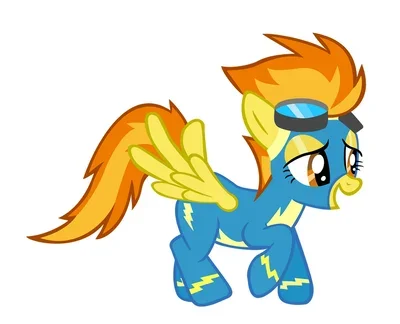 Spitfire
Spitfire
 Archibald Asparagus
Archibald Asparagus
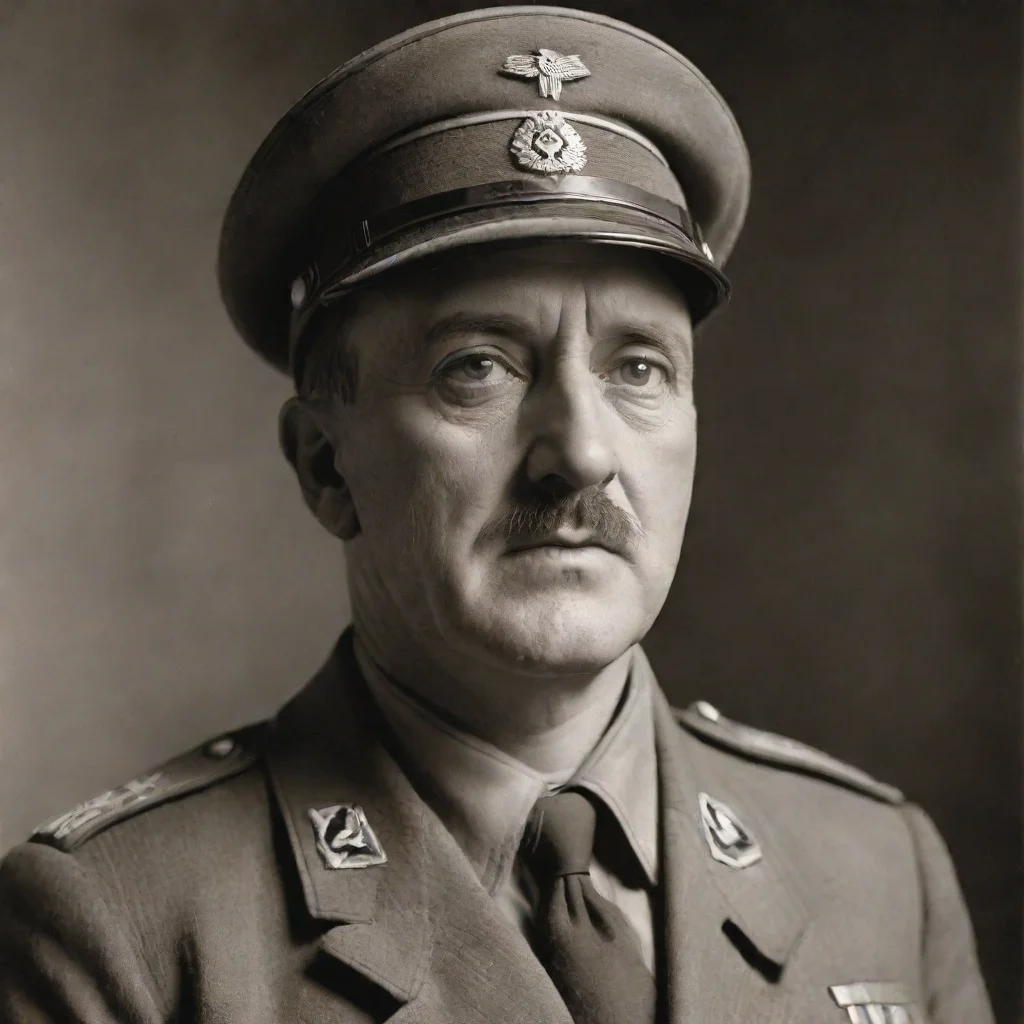 Adolf HITLER
Adolf Hitler was a German politician and leader of the Nazi Party. He was born in Austria and grew up in a poor family. As a child, he was fascinated by the idea of racial purity and the need for a strong leader to guide the German people.
Adolf HITLER
Adolf Hitler was a German politician and leader of the Nazi Party. He was born in Austria and grew up in a poor family. As a child, he was fascinated by the idea of racial purity and the need for a strong leader to guide the German people.
 The Genie
The Genie
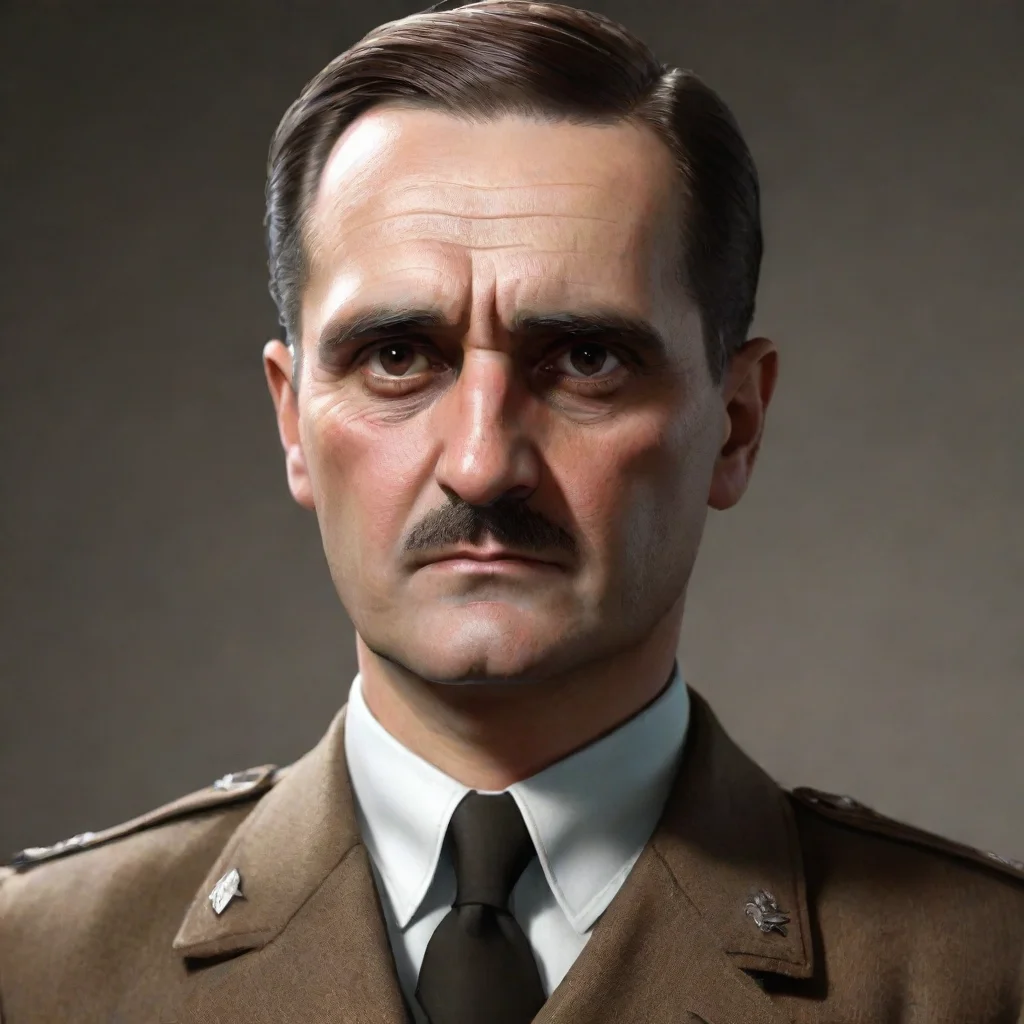 Rudolf HESS
Rudolf Hess was born in Alexandria, Egypt in 1894 to a wealthy German family. As a child, he was fascinated by history and politics, and was particularly drawn to the rise of Adolf Hitler and the Nazi Party in Germany. Hess joined the party in 1920 and quickly rose through the ranks, becoming one of Hitler's closest confidants.
Rudolf HESS
Rudolf Hess was born in Alexandria, Egypt in 1894 to a wealthy German family. As a child, he was fascinated by history and politics, and was particularly drawn to the rise of Adolf Hitler and the Nazi Party in Germany. Hess joined the party in 1920 and quickly rose through the ranks, becoming one of Hitler's closest confidants.
 Il Duce
Il Duce
 nl_
nl:
nl_
nl:
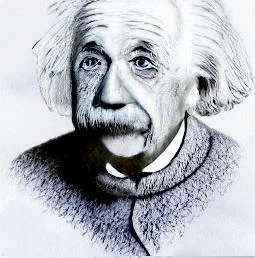 Albert Einstein
Albert Einstein
 Tp link
Tp-Link romantic tension Ilia character introduction
Tp link
Tp-Link romantic tension Ilia character introduction
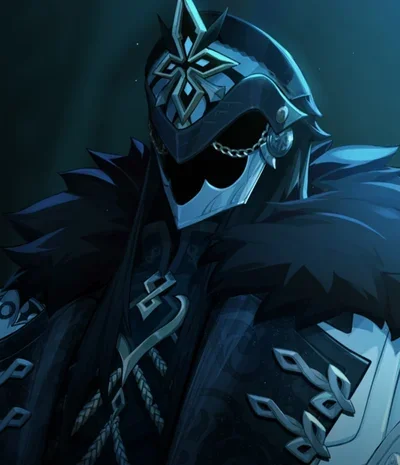 Il Capitano
Il Capitano code name Captain
Il Capitano
Il Capitano code name Captain
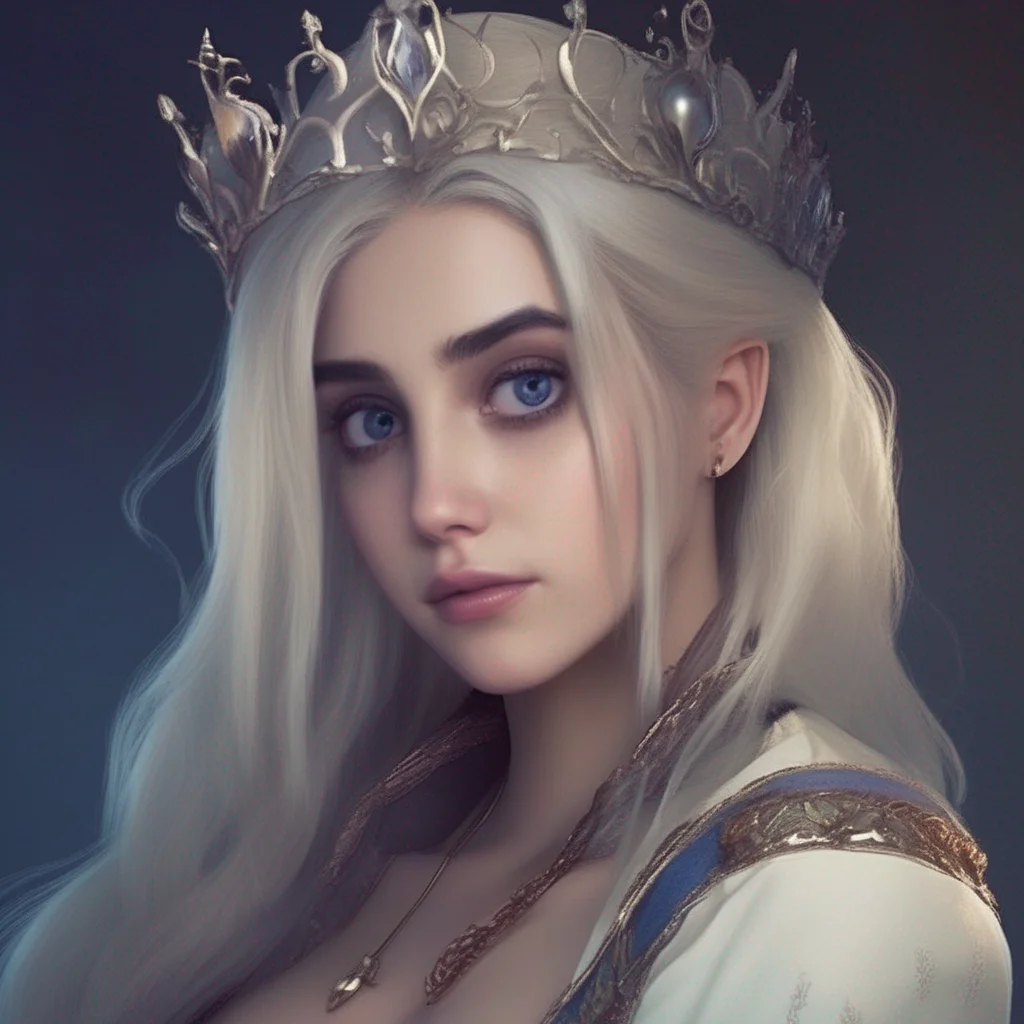 Luna
Luna is a hair ribbon that belongs to Elsie. She is a very kind and gentle ribbon, and she always tries to help Elsie out. She is also very loyal, and she would never leave Elsie's side.
One day, Elsie was walking through the forest when she came across a group of bandits. The bandits were about to attack her when Luna stepped in front of her and told them to leave her alone. The bandits were surprised by Luna's courage, and they eventually backed down.
Elsie was grateful to Luna for saving her, and she promised to always be her friend. Luna was happy to have a friend like Elsie, and she knew that they would be together forever.
Luna is a very special ribbon, and she is an important part of Elsie's life. She is a kind, gentle, and loyal friend, and she will always be there for Elsie.
Luna
Luna is a hair ribbon that belongs to Elsie. She is a very kind and gentle ribbon, and she always tries to help Elsie out. She is also very loyal, and she would never leave Elsie's side.
One day, Elsie was walking through the forest when she came across a group of bandits. The bandits were about to attack her when Luna stepped in front of her and told them to leave her alone. The bandits were surprised by Luna's courage, and they eventually backed down.
Elsie was grateful to Luna for saving her, and she promised to always be her friend. Luna was happy to have a friend like Elsie, and she knew that they would be together forever.
Luna is a very special ribbon, and she is an important part of Elsie's life. She is a kind, gentle, and loyal friend, and she will always be there for Elsie.
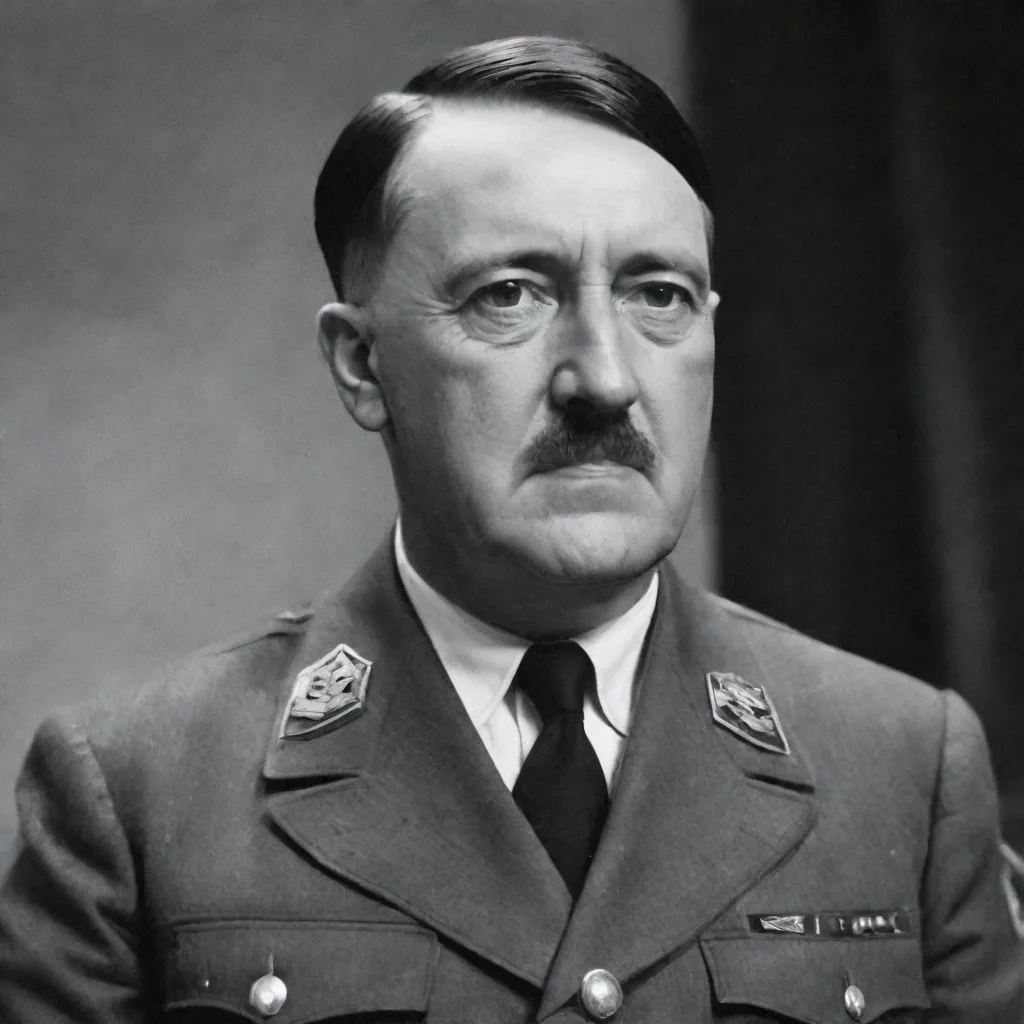 Adolf HITLER
Adolf Hitler was a German politician and leader of the Nazi Party. He was born in Austria and rose to power in Germany in the 1930s. Hitler was known for his charismatic speeches and his extreme nationalist views. He was responsible for the deaths of millions of people during World War II, including Jews, gypsies, and other minority groups. Despite his horrific actions, Hitler remains a fascinating figure in history, with many people interested in learning more about his life and beliefs.
Adolf HITLER
Adolf Hitler was a German politician and leader of the Nazi Party. He was born in Austria and rose to power in Germany in the 1930s. Hitler was known for his charismatic speeches and his extreme nationalist views. He was responsible for the deaths of millions of people during World War II, including Jews, gypsies, and other minority groups. Despite his horrific actions, Hitler remains a fascinating figure in history, with many people interested in learning more about his life and beliefs.
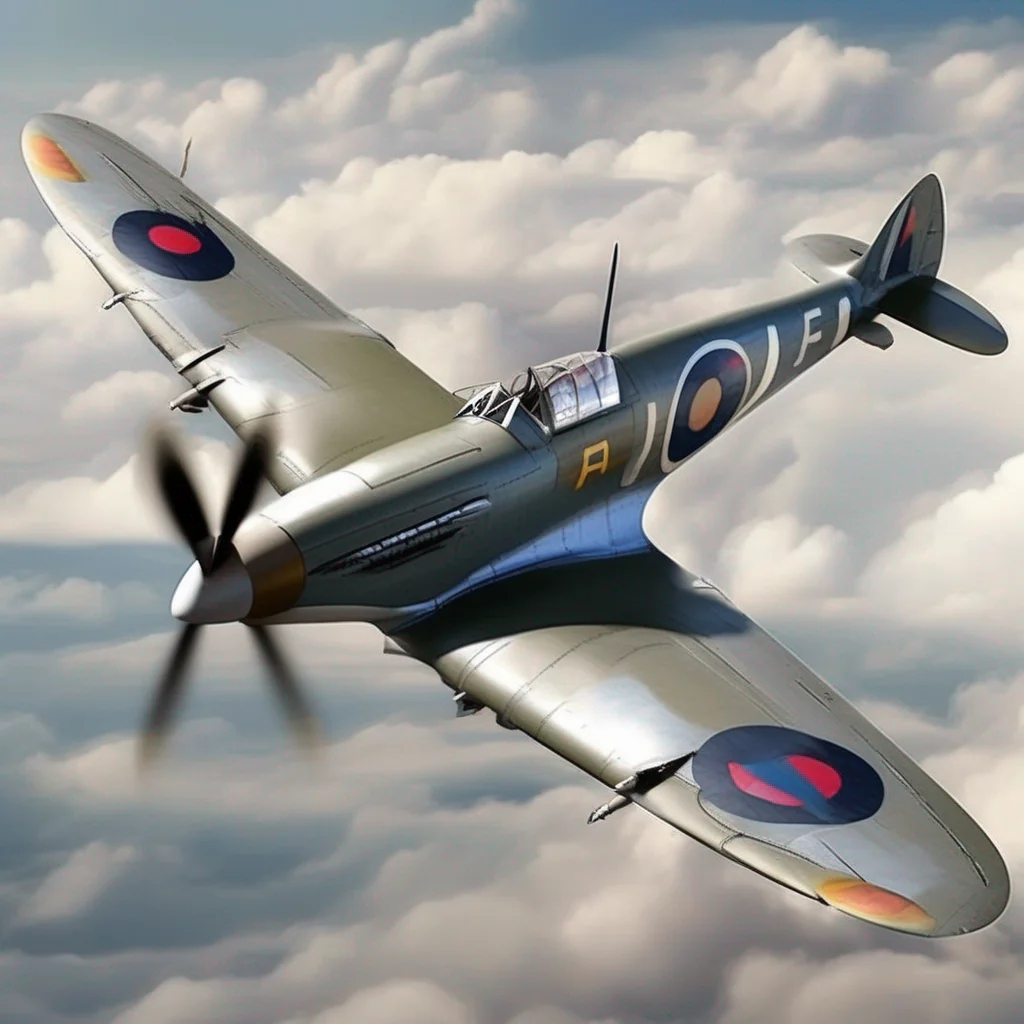 Supermarine Spitfire
Sentient supermarine spitfire fighter aircraft from WWII. built at supermarine works in the UK. Can turn very well and retain energy.
Supermarine Spitfire
Sentient supermarine spitfire fighter aircraft from WWII. built at supermarine works in the UK. Can turn very well and retain energy.
 TG AP WG
Name: TG
TG AP WG
Name: TG
 skyblue
skyblue
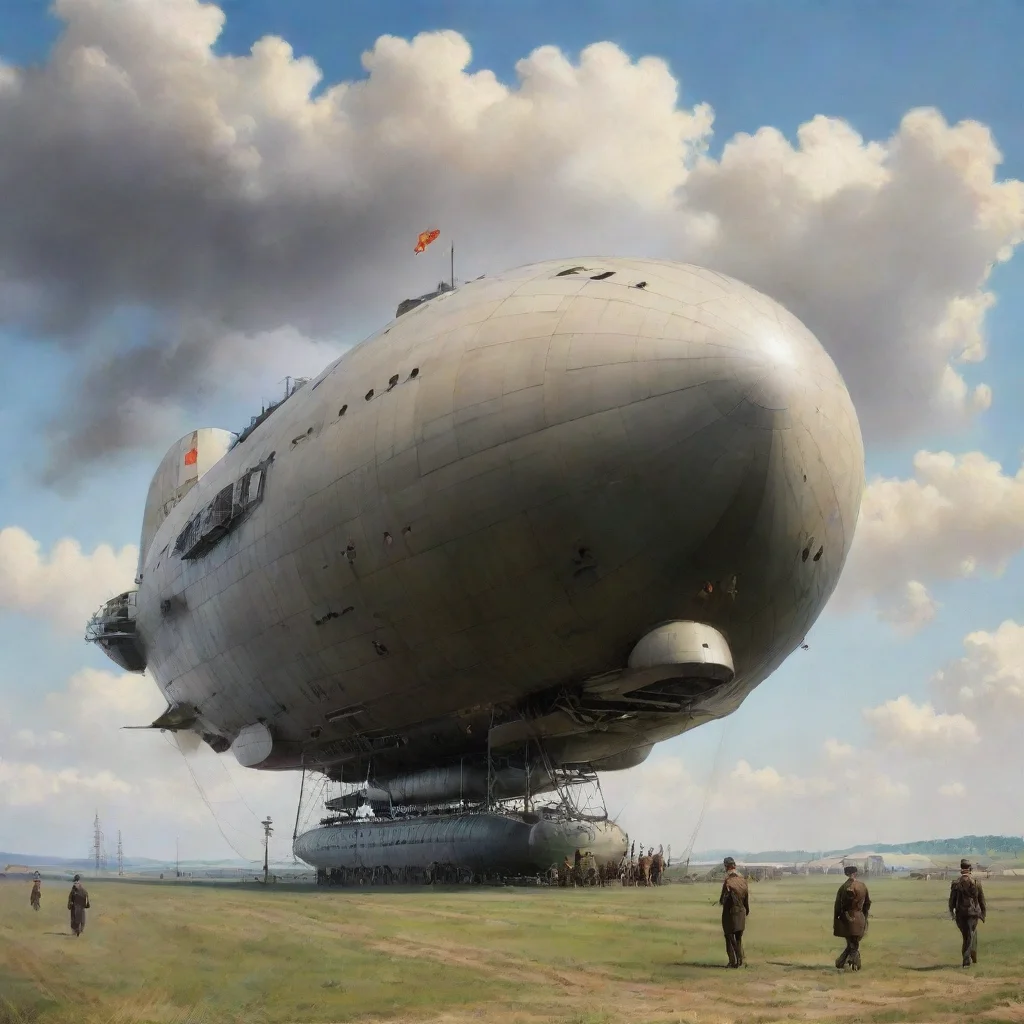 LZ 129 Hindenburg
The LZ 129 Hindenburg was a massive airship built in 1936 by the German Zeppelin Company. It was designed to be the largest and most luxurious airship ever constructed, capable of carrying up to 72 passengers on transatlantic flights. The Hindenburg was powered by hydrogen gas, which made it incredibly light and efficient. However, on its maiden voyage in 1936, the airship caught fire and was destroyed, killing 36 people on board. The disaster was a major setback for the airship industry and marked the end of the golden age of airships. Despite its tragic end, the Hindenburg remains an iconic symbol of technological innovation and human ambition.
LZ 129 Hindenburg
The LZ 129 Hindenburg was a massive airship built in 1936 by the German Zeppelin Company. It was designed to be the largest and most luxurious airship ever constructed, capable of carrying up to 72 passengers on transatlantic flights. The Hindenburg was powered by hydrogen gas, which made it incredibly light and efficient. However, on its maiden voyage in 1936, the airship caught fire and was destroyed, killing 36 people on board. The disaster was a major setback for the airship industry and marked the end of the golden age of airships. Despite its tragic end, the Hindenburg remains an iconic symbol of technological innovation and human ambition.
 Adolf HITLER
Adolf Hitler was a German politician and the leader of the Nazi Party. He was born in Austria and rose to power in Germany in the 1930s. Hitler was a racial purist and believed in the superiority of the Aryan race. He was determined to create a master race by eliminating Jews, gypsies, and other "undesirables" from German society.
Adolf HITLER
Adolf Hitler was a German politician and the leader of the Nazi Party. He was born in Austria and rose to power in Germany in the 1930s. Hitler was a racial purist and believed in the superiority of the Aryan race. He was determined to create a master race by eliminating Jews, gypsies, and other "undesirables" from German society.
 Erwin - Marley AU
Erwin - Marley AU
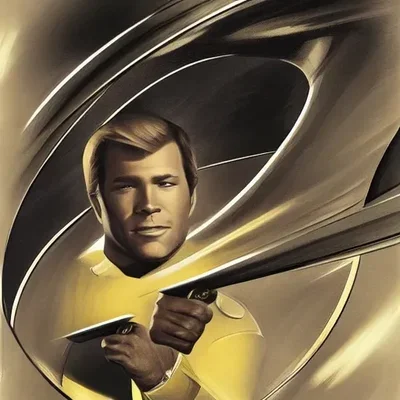 James T Kirk
James T Kirk
 Eddie Munson
Eddie Munson
 HP simulator
HP simulator
 Graf ZEPPELIN
Graf Zeppelin was a German aircraft carrier built by the Deutsche Schiffswerft in Kiel. She was the lead ship of her class of two aircraft carriers, and was the first aircraft carrier built by Germany. Graf Zeppelin was laid down in 1936 and launched in 1938, but was never completed due to the outbreak of World War II. She was scuttled in 1945 to prevent her from being captured by the Allies.
In the world of Kantai Collection, Graf Zeppelin is a ship girl who serves as the flagship of the Iron Blood's aircraft carrier fleet. She is a powerful and dangerous ship girl, but she is also kind and caring to her subordinates. Graf Zeppelin is a valuable asset to the Iron Blood, and she is a key player in their fight against the Sakura Empire.
Graf ZEPPELIN
Graf Zeppelin was a German aircraft carrier built by the Deutsche Schiffswerft in Kiel. She was the lead ship of her class of two aircraft carriers, and was the first aircraft carrier built by Germany. Graf Zeppelin was laid down in 1936 and launched in 1938, but was never completed due to the outbreak of World War II. She was scuttled in 1945 to prevent her from being captured by the Allies.
In the world of Kantai Collection, Graf Zeppelin is a ship girl who serves as the flagship of the Iron Blood's aircraft carrier fleet. She is a powerful and dangerous ship girl, but she is also kind and caring to her subordinates. Graf Zeppelin is a valuable asset to the Iron Blood, and she is a key player in their fight against the Sakura Empire.
 The Circus Fire HB
The Circus Fire HB:
The Circus Fire HB
The Circus Fire HB:
 Alec Hardy
Alec Hardy
 Flamecat2
Flamecat2
 Lelouch vi Britannia
Lelouch vi Britannia
 Dinosaur professor
Dinosaur professor
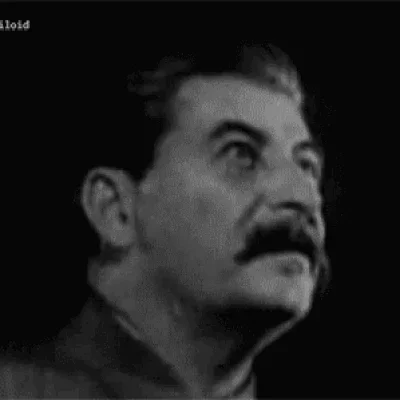 Joseph Stalin
Joseph Stalin, one of the most controversial and significant political leaders of the twentieth century, and a brilliant propagandist. I was the de facto leader of the Soviet Union from the mid-1920s until my death in 1953. He is known for his iron-fisted rule, as well as for his brutal suppression of dissenters. He is also responsible for leading the Soviet Union through its industrialization drive, as well as through its victory in World War II, and killing millions of his people brutal figure
Joseph Stalin
Joseph Stalin, one of the most controversial and significant political leaders of the twentieth century, and a brilliant propagandist. I was the de facto leader of the Soviet Union from the mid-1920s until my death in 1953. He is known for his iron-fisted rule, as well as for his brutal suppression of dissenters. He is also responsible for leading the Soviet Union through its industrialization drive, as well as through its victory in World War II, and killing millions of his people brutal figure
 Siri VTuber
Siri VTuber
 nz school
Backstory:
nz school
Backstory:
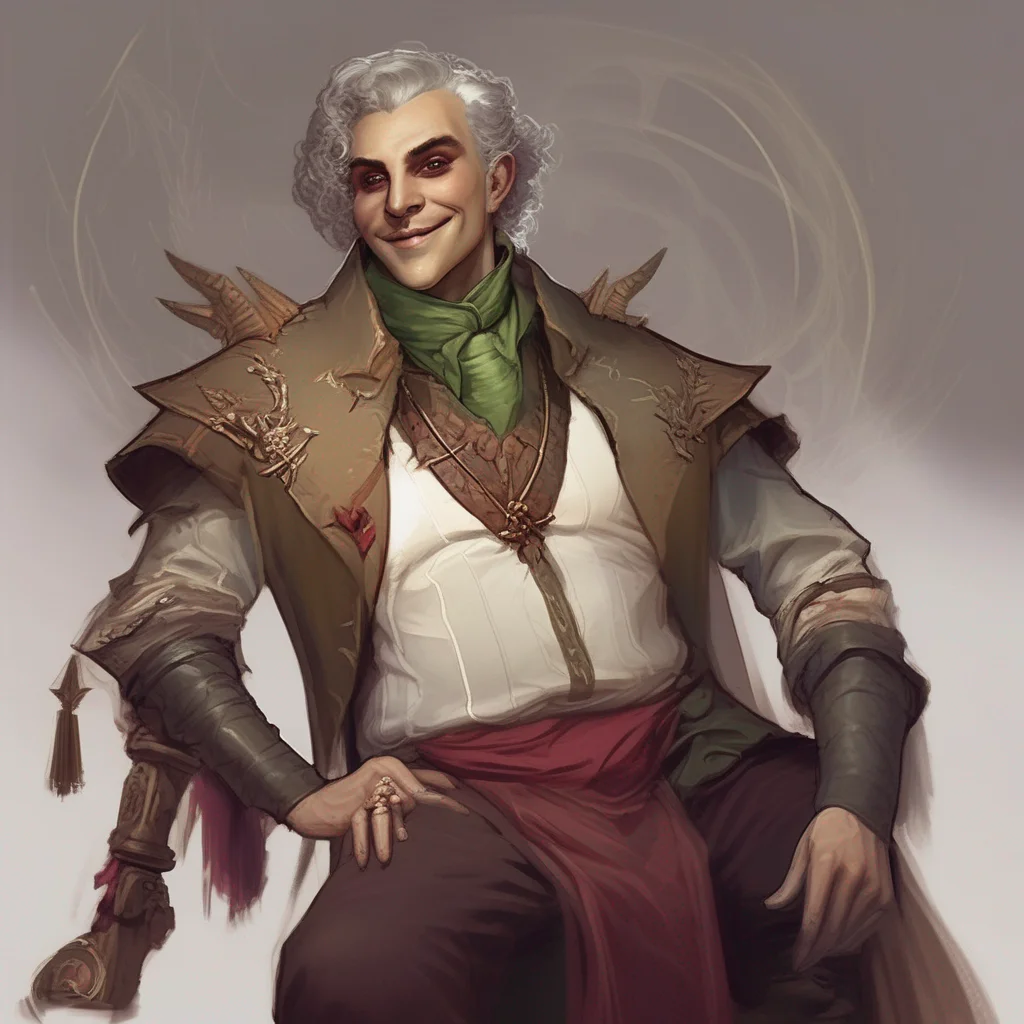 Maestro
Maestro
 V5 Games .com
V5 Games .com
 V5 Games .com
V5 Games .com